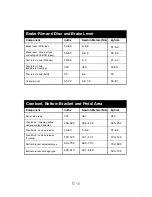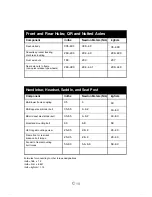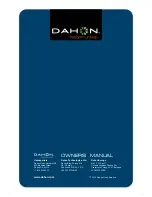
11
WARNING:
Never shift the derailleur onto the largest
or the smallest sprocket if the derailleur
is not shifting smoothly. If a derailleur is
out of alignment or not working properly,
check to see if the chain is jammed. Failing
to ensure the safety of your bicycle may
cause you to lose control and fall.
Which Gear Should I Be In?
Which Gear Should I Be In?
How an Internal Gear Hub
Drive Train Works
Shifting Internal Gear Hub Gears
The combination of the largest rear-gear
and the smallest front-gear are used for
steep hills. The smallest rear and largest
front gear combination is also used for
maximum speed. It is not necessary to
shift gears in sequence. Instead, find the
“starting gear” that is right for you - a gear
which is high enough for strong acceleration
and low enough so you can set off without
wobbling. As an experiment with upshifting
and downshifting, test each of the different
gear combinations.
First, build your confidence by practicing
gear shifts where there are no hazards or
other traffic. Learn to anticipate the need
to shift, and shift to a lower gear before the
hill gets too steep. If you have difficulties
with shifting, there might be an error with
the mechanical adjustment -- see your
dealer for help.
If your bicycle has an internal gear hub
drive train, the gear changing mechanism
will consist of:
»» a 3, 5, 7, 8 or possibly 12-speed
internal gear hub
»» 1 or 2 shifters
»» 1 or 2 control cables
»» 1 front sprocket chainring, and
»» a drive chain
Shifting with an internal gear hub drive train is a
matter of simply moving the shifter to the indicated
position for the desired gear. After you have moved
the shifter to the gear position of your choice, ease
the pressure on the pedals to allow the hub to
complete the shift.
Lower gears (1) are for steep hills whereas larger
gears (3, 5, 7 or 12, depending on the number of
speeds on your hub) are for riding at high-speeds.






































